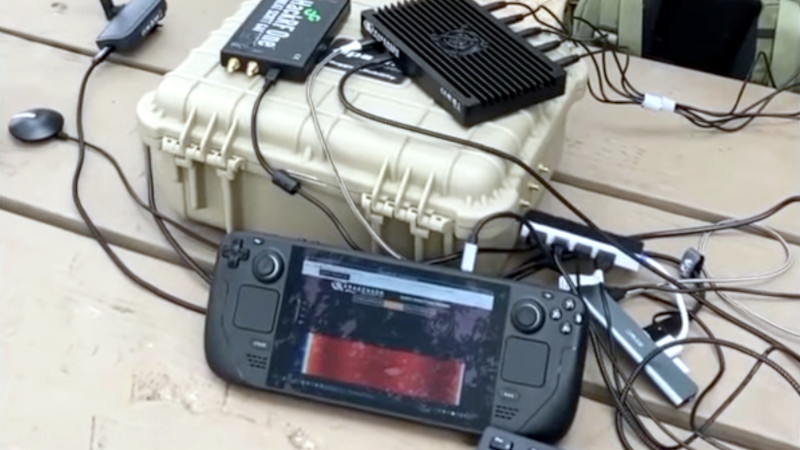It’s no secret that the Steam Deck is a powerful computer, especially for its price point. It has to be capable enough to run modern PC games while being comfortable as a handheld, all while having a useful amount of battery life. Thankfully Valve didn’t lock down the device like most smartphone manufacturers, allowing the computer to run whatever operating system and software the true owner of the device wants to run. That means that a whole world of options is open for this novel computer, like using it to set up an 802.11ah Wi-Fi network over some pretty impressive distances.
Of course the Steam Deck is more of a means to an end for this project; the real star of the show is DragonOS, a Debian-based Linux distribution put together by [Aaron] to enable easy access to the tools needed for plenty of software-defined radio projects like this one. Here, he’s using it to set up a long-distance Wi-Fi network on one side of a lake, then testing it by motoring over to the other side of the lake to access the data from the KrakenSDR setup running on the Deck, as well as performing real-time capture of IQ data that was being automatically demodulated and feed internally to whispercpp.
While no one will be streaming 4K video over 802.11ah, it’s more than capable of supporting small amounts of data over relatively large distances, and [Aaron] was easily able to SSH to his access point from over a kilometer away with it. If the lake scenery in the project seems familiar at all, it’s because this project is an extension of another one of his DragonOS projects using a slightly lower frequency to do some impressive direction-finding, also using the Steam Deck as a base of operations.
















Nice to see people are playing around with 802.11ah stuff, as this allows high distance high bandwidth networks (compared to e.g. LoraWan). Want to see more!
Definitely. The hardware is still way too expensive though.
not sure why or how this is a hack. I live on a lake and have been using an engenius enh200 have it sitting on top of a 100ft pole and stream wifi (mostly music and youtube) well over a mile away from it without issue whenever i’m out on the lake. I know lots of others doing similar things for years. Heck the model alone should give some context to how long i’ve been doing this and I’m sure i am not the first to do this.
Were you using a Steam Deck to do it??
No??
Well that’s where the “hack” comes in, as most consumers will never even use, or even know desktop mode even exists on it, and what can be done with it.
If the functions exist on the production device, it’s not really a “hack”… still a neat application.
Yep. I was expecting some extreme numbers like 10km, but 1km? Thats off the shelf wifi with external antenna all day long.
“Poles” and “external” antennas, neither used or discussed in the video which I think is the point. Went and looked up 802.11ah which seems to have some pretty interesting features. Thanks for sharing!
Without a pole to give you line of sight, signal degrades on any wifi signal. This is basic radio signal 101
So called “WokFi” distance enhancement has been around since WiFi’s arrival ~20 years ago =>https://www.instructables.com/%22Poorman-s-WiFi%22–USB-adapters-&-DIY-cookware-refl/
You do all realize there’s no poles and no special antennas being used in the video? Of course you can get long distance that way. Imagine if you did the same for 802.11ah. I think the point is the devices are just laying there on the picnic table and having no issue connecting.
The only reason he doesn’t need a pole is because he has line of sight between the routers across an empty lake. That’s not practical on a busy lake or literally anywhere else with trees. In the videos case, he’s set up a very impractical controlled experiment that replicate what has been possible for years anyway under the same conditions.